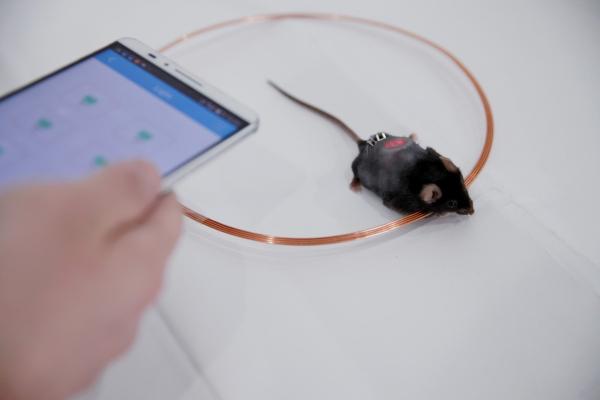

 |
Diabetic mice implanted with special cells and LED chips can maintain glucose homeostasis via a smartphone app, offering hope to type 1 diabetics who currently require the supplement of artificial insulin to lower their blood sugar levels, Thepaper.cn reported on April 29.
The study was done by Ye Haifeng and his team at the School of Life Sciences of East China Normal University and the Shanghai Key Laboratory of Regulatory Biology. The results have been published in Science Translational Medicine.
The core technology involves implanting a special gene into the body of the mice that causes different reactions when stimulated at various light wavelengths. Once a blood glucose monitor shows a mouse's blood glucose above a certain threshold, the system sets off the LED and tells the cells to produce insulin until the mouse's blood sugar is reduced to a normal level.
A highlight of the research is that the light duration and intensity of the LED is controlled by a smartphone app, which can read the blood glucose meter results and adjust the light accordingly.
Apart from diabetes, the tool may also help to treat Parkinson’s disease and schizophrenia, and is expected to bring relief to those patients suffering from blurred vision due to changes in retinal pigmentation.
Though some skeptics have brought up the vulnerability of this therapy to hackers, Ye said that that the problem can be addressed through encryption.
 Fire brigade in Shanghai holds group wedding
Fire brigade in Shanghai holds group wedding Tourists enjoy ice sculptures in Datan Town, north China
Tourists enjoy ice sculptures in Datan Town, north China Sunset scenery of Dayan Pagoda in Xi'an
Sunset scenery of Dayan Pagoda in Xi'an Tourists have fun at scenic spot in Nanlong Town, NW China
Tourists have fun at scenic spot in Nanlong Town, NW China Harbin attracts tourists by making best use of ice in winter
Harbin attracts tourists by making best use of ice in winter In pics: FIS Alpine Ski Women's World Cup Slalom
In pics: FIS Alpine Ski Women's World Cup Slalom Black-necked cranes rest at reservoir in Lhunzhub County, Lhasa
Black-necked cranes rest at reservoir in Lhunzhub County, Lhasa China's FAST telescope will be available to foreign scientists in April
China's FAST telescope will be available to foreign scientists in April "She power" plays indispensable role in poverty alleviation
"She power" plays indispensable role in poverty alleviation Top 10 world news events of People's Daily in 2020
Top 10 world news events of People's Daily in 2020 Top 10 China news events of People's Daily in 2020
Top 10 China news events of People's Daily in 2020 Top 10 media buzzwords of 2020
Top 10 media buzzwords of 2020 Year-ender:10 major tourism stories of 2020
Year-ender:10 major tourism stories of 2020 No interference in Venezuelan issues
No interference in Venezuelan issues
 Biz prepares for trade spat
Biz prepares for trade spat
 Broadcasting Continent
Broadcasting Continent Australia wins Chinese CEOs as US loses
Australia wins Chinese CEOs as US loses